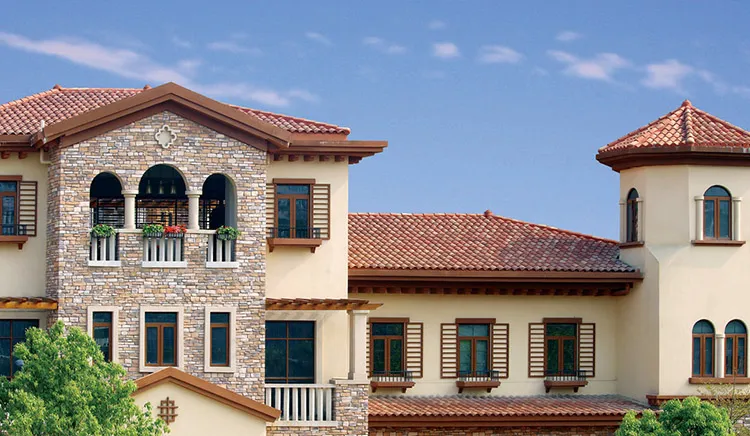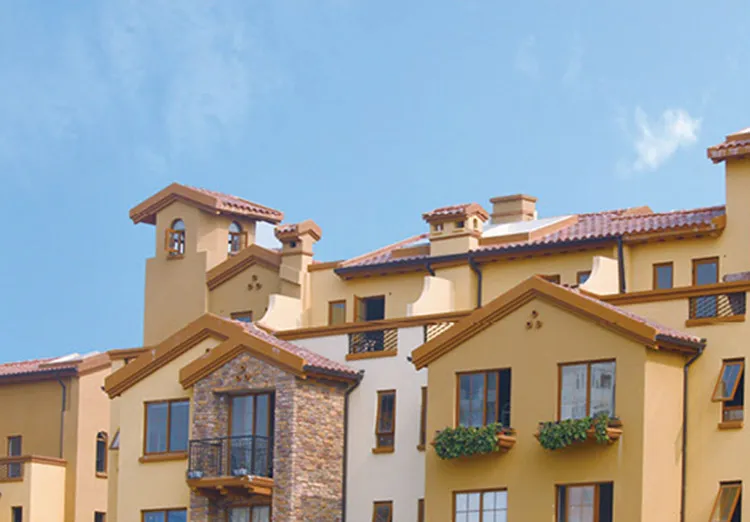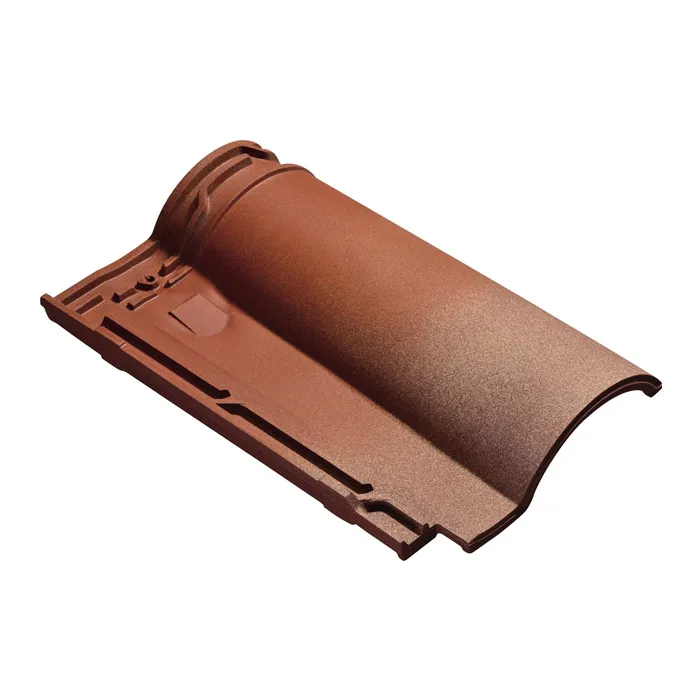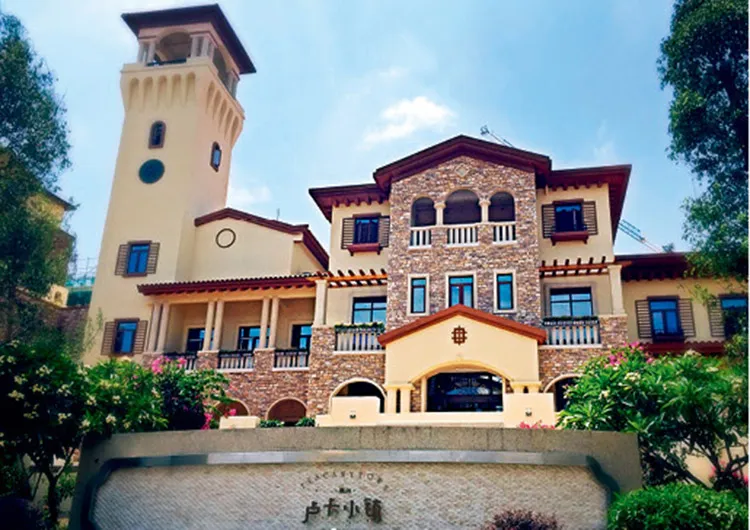Among building roofing materials, Roman Clay Tiles are an ideal choice for many traditional and modern buildings due to their classic appearance, durable performance and good environmental adaptability. However, for homeowners, the maintenance and repair costs of roof tiles are important considerations when selecting materials. So, are Roman Clay Tiles Easy to Repair? This requires a specific analysis based on its material properties, common types of damage, and the actual difficulty of the repair process.

What are Roman Clay Tiles?
Roman Clay Tiles is a traditional building material made of natural clay that is molded and fired at high temperatures, and has extremely high strength and durability. This tile is often used in Mediterranean and Italian-style building roofs due to its unique curved design and dark tones, combining practicality and decorativeness.
Here are some key features of Roman Clay Tiles:
● Durability: Clay tiles have strong wind and rain resistance and their service life is usually more than 50 years.
● UV and corrosion resistance: Clay tiles with fired surfaces are UV and moisture resistant, and are not prone to fading or aging.
● Good ventilation and insulation performance: The unique shape design can promote air circulation and help regulate indoor temperature.
Although roman clay tiles are known for their excellent durability, any roofing material may be damaged by external forces, weather or construction quality problems when exposed to the natural environment for a long time, and timely repair is required to extend the service life.
What are the common types of damage to roman clay tiles?
In order to assess the difficulty of repair, you first need to understand the common problems that may occur in roman clay tiles. These problems are usually divided into two categories: natural damage and damage caused by human factors.
1. Natural damage
● Weathering and breakage: Clay tiles may develop fine cracks when exposed to sunlight, rain and frost for a long time. In areas with large temperature differences, freeze-thaw cycles may accelerate the breakage of the tile surface.
● Moss and algae growth: In a humid environment, moss and algae are easy to grow on the surface of clay tiles, affecting the drainage performance and appearance of the tiles.
● Wind or hail damage: Strong winds may lift tiles, and hail may cause local dents or cracks.
2. Human factors
● Improper construction: If the nails, hooks and other fixings used during the installation process are not firm, the tiles may slide or shift.
● Accidental trampling: When repairing other roof facilities (such as chimneys or drainage pipes), people stepping on clay tiles may cause them to break.
● Improper cleaning methods: Using high-pressure water guns or hard brushes may damage the surface of the tiles and reduce their waterproof performance.

Are roman clay tiles easy to repair?
Whether it is easy to repair depends mainly on the following aspects:
1. Scope and complexity of damage
Local damage is easier to repair: If only a few tiles are broken or slipped, the repair is usually simpler. The operation required to replace a single tile only involves removing the damaged tile, replacing it with a new tile and re-fixing it.
Structural problems are more complicated to repair: If the damage involves the basic structure of the roof (such as wooden beams or waterproofing layers), it needs to be fully inspected and repaired, and the repair time and cost will increase accordingly.
2. Tools and techniques required for repair
The repair of roman clay tiles usually requires the following tools: pry bars, ladders, replacement tiles, waterproof coatings and nails. The tools are relatively basic, but the construction requires certain skills, especially keeping the tiles flat and tight.
Construction workers need to master the correct tile removal and installation techniques to avoid secondary damage to surrounding tiles during the repair process.
3. Height and safety
The height and inclination angle of the roof will directly affect the operability of the repair. A flat roof is easy to construct, while a steep roof may require professional safety equipment and personnel, increasing the difficulty and cost of repair.

Detailed explanation of the repair steps of roman clay tiles
Step 1: Inspection and evaluation
Before repair, a comprehensive inspection of the roof is required to record the location and extent of the damage. This step usually includes the following:
Confirm the number of damaged tiles.
Check whether the waterproof layer under the tiles is intact.
Confirm whether there are any structural problems.
Step 2: Prepare tools and materials
Common materials include replacement tiles, waterproof coatings and installation fixtures. Make sure the replacement tiles match the existing roman clay tiles in color, shape and size to ensure aesthetics and functionality.
Step 3: Remove the damaged tiles
Use a pry bar to gently pry up the damaged tiles and remove them, while being careful not to damage the surrounding tiles and fixing structures.
Step 4: Install the new tiles
Fix the new tiles in the original position. If the roman clay tiles need to be installed with nails or hooks, make sure they are tightly combined to prevent sliding or falling off later.
Step 5: Check and clean
After the repair is completed, the roof should be fully inspected to confirm whether the roman clay tiles are neatly arranged and whether there are any loose tiles that have been missed. In addition, clean the residual debris and stains on the roof surface.
Advantages of roman clay tiles repair
1. Material properties make local repairs possible
Roman clay tiles are highly independent, and each tile is usually fixed by biting or nailing, independent of each other. This design makes local repairs more convenient without the need to remove a large area of the roof.
2. Easy to obtain replacement tiles
As a widely used traditional material, replacement parts for roman clay tiles are usually easy to purchase. Many manufacturers provide tiles with matching colors and shapes to meet repair needs.
3. Natural materials are easy to repair
Clay tiles are natural materials and the production process is relatively simple. Even if local tiles are out of stock, the problem can be solved by customizing small batches or alternative designs.

Potential challenges of repair
1. High reliance on professional skills
Although the replacement of a single tile is relatively simple, the overall coordination and waterproofing of the roof requires experienced professionals.
2. Weather and environmental restrictions
Repair work may be delayed during rainy seasons or extreme weather. In addition, there are safety hazards in roof repairs under strong winds and high temperatures.
3. Repair costs vary depending on the complexity of the problem
Although the replacement cost of a single roman clay tile is low, the overall repair cost may increase significantly if waterproofing or structural problems are involved.
Rongguan, a name synonymous with innovation and excellence in building materials, is a trusted supplier to global markets. Our range includes premium quartz stone countertops, terrazzo flooring, and roman clay tiles, designed to meet modern architectural demands. Operating from a 300,000-square-meter facility in Foshan, we employ cutting-edge technology and advanced production lines, ensuring efficiency and precision. Whether you’re looking for competitive wholesale prices, seasonal promotions, or customized designs, Rongguan delivers solutions tailored to your needs. Join our growing list of satisfied customers across North America, Europe, and Southeast Asia, and experience the reliability of our high-quality materials.

